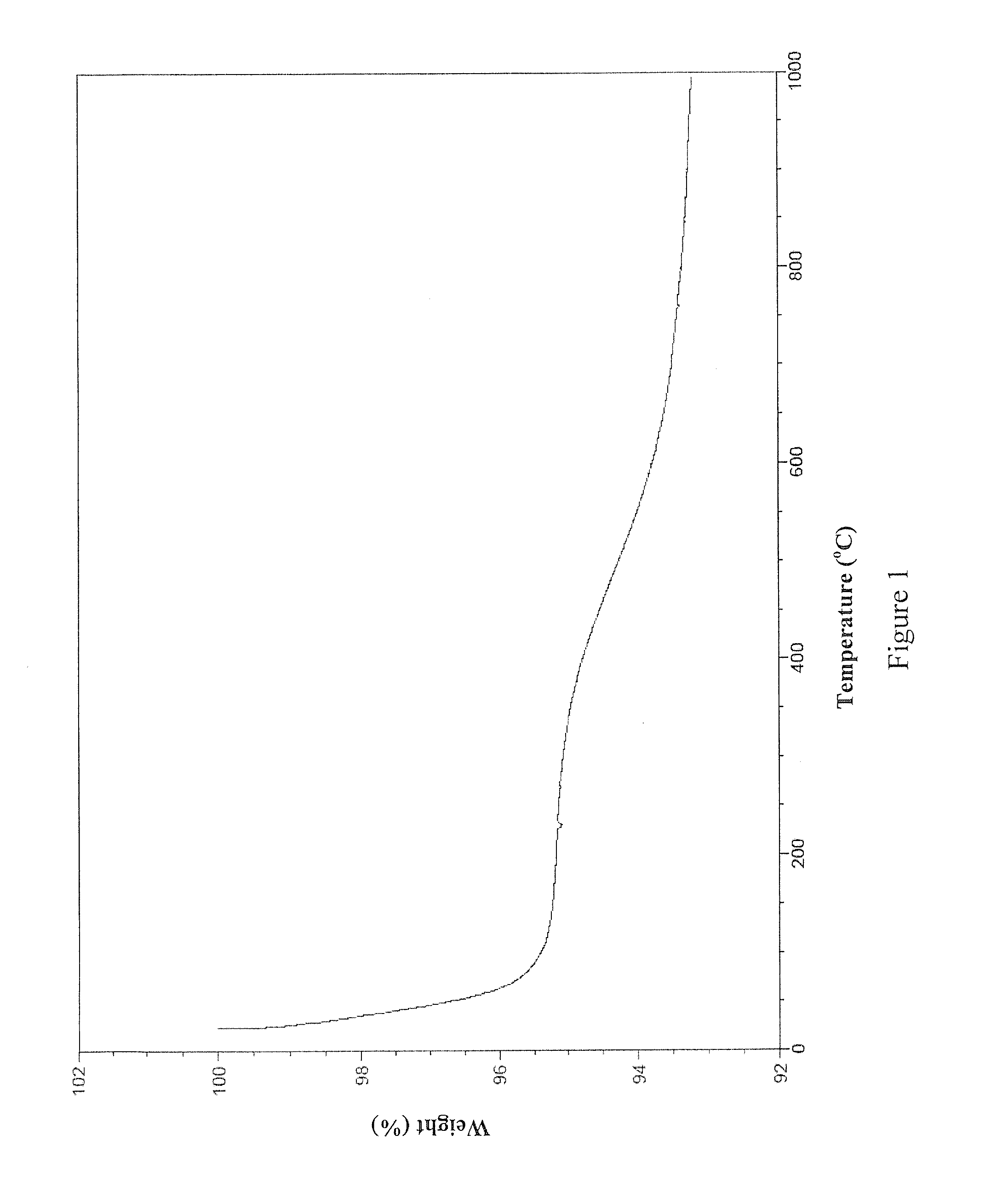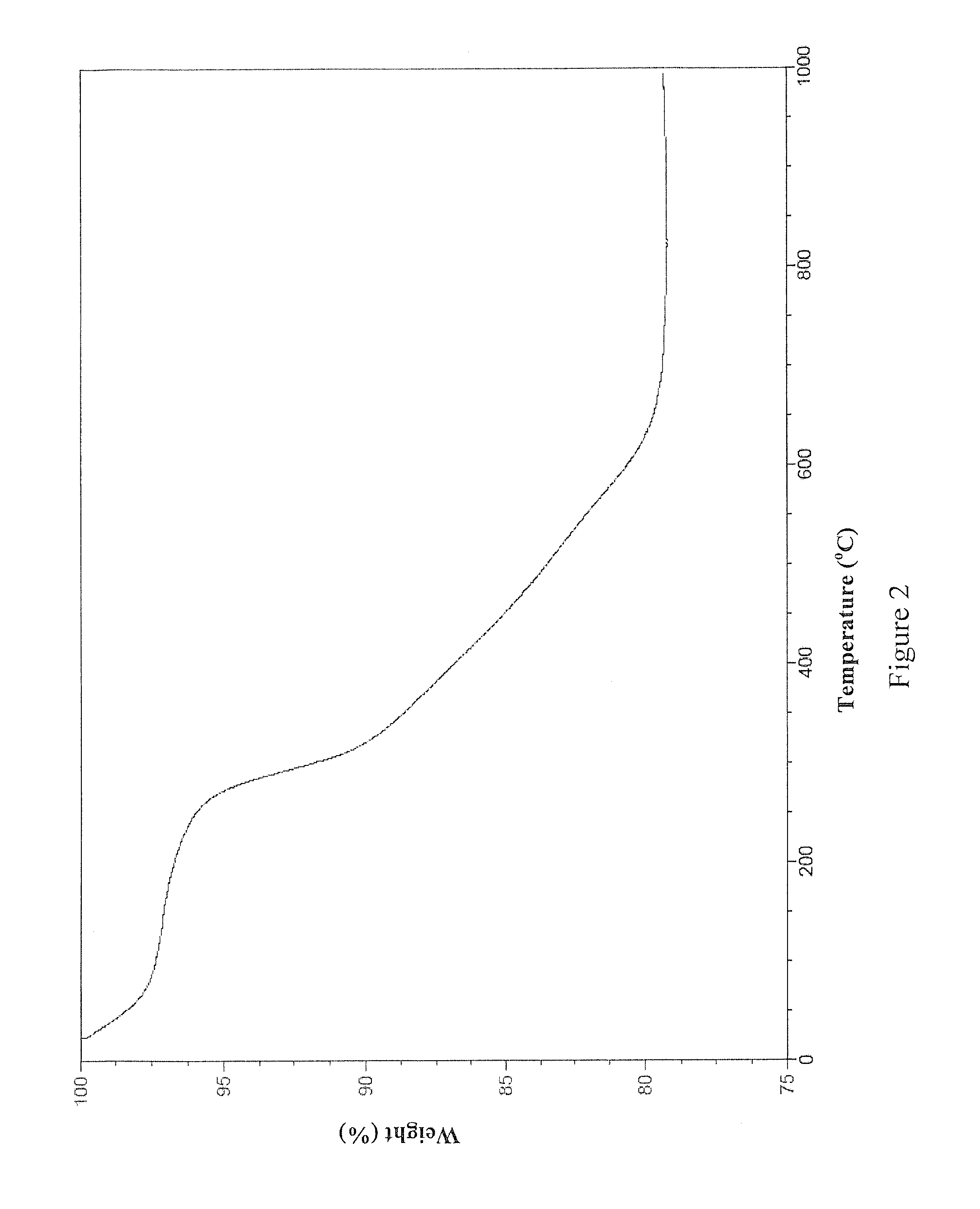Thiol-containing compounds for the removal of elements from tissues and formulations therefor
a technology of thiol-containing compounds and tissues, which is applied in the direction of group 4/14 element organic compounds, drug compositions, chlor-alkali industries, etc., can solve the problems of heavy metal and main group element pollution, significant environmental problems, and waste water discharge from functional and abandoned mines, etc., to achieve the effect of speeding up general delivery, low toxicity, and reducing the risk of death
- Summary
- Abstract
- Description
- Claims
- Application Information
AI Technical Summary
Benefits of technology
Problems solved by technology
Method used
Image
Examples
example 1
[0079]This example details the synthesis of one non-limiting embodiment of AB9 by the following scheme:
0.78 grams of L-cysteine hydrochloride (5.0 mmol) obtained from Sigma-Aldrich® was dissolved in 100 mL deionized water. 1.02 grams of triethylamine (10 mmol; 1.4 mL), hereinafter referred to as “TEA,” and 0.5 grams of isophthaloyl chloride (2.5 mmol) obtained from TCI® were each dissolved separately in 20 mL of tetrahydrofuran, hereinafter referred to as “THF,” obtained from Acros Organics®. The TEA dissolved in THE was slowly added to the solution of L-cysteine hydrochloride in deionized water, which was stirring in a flask under a flow of N2 gas. After stiffing for 5-10 minutes, the isophthaloyl chloride dissolved in THF was slowly added to the flask. As the reaction proceeded, the color of the reaction mixture turned to light yellow. The reaction mixture continued stirring for 16-18 hours. At the end of the 16-18 hours, the aqueous layer was extracted utilizing 100 mL of ethyl a...
example 2
[0080]This example details the synthesis of one non-limiting embodiment of MEAB9 by the following scheme:
2.57 grams of L-cysteine methyl ester hydrochloride (15 mmol) was dissolved in 150 mL of CHCl3. 1.52 grams of TEA (15 mmol; 2.07 mL) was dissolved in 25 mL of CHCl3. 1.0 gram of isophthaloyl chloride (5 mmol) was dissolved in 40 mL of CHCl3. The TEA solution and the isophthaloyl chloride solution were slowly added to the L-cysteine methyl ester hydrochloride solution. The reaction was stirred for 24 hours. The reaction solution was then filtered and the filtrate was washed three times with 200 mL of 10% Omnitrace® hydrochloric acid. After washing, the CHCl3 layer was filtered again and dried over anhydrous Na2SO4. The CHCl3 was then removed under vacuum and the product was obtained as a highly viscous oily liquid. The oily liquid was dissolved again in CHCl3 and the CHCl3 was subsequently removed under vacuum. This process was repeated twice and the resulting white solid was then...
example 3
[0081]This example details the synthesis of one non-limiting embodiment of EEAB9 by the following scheme:
2.72 grams of L-Cysteine ethyl ester hydrochloride (15 mmol) was dissolved in 150 mL of CHCl3. 1.48 grams of TEA (15 mmol; 2.02 mL) was dissolved in 25 mL of CHCl3, 1 gram of isophthaloyl chloride (5 mmol) was dissolved in 40 mL of CHCl3. The TEA solution and the isophthaloyl chloride solution were slowly added to the L-cysteine ethyl ester hydrochloride solution. The reaction was stirred for 24 hours. The reaction solution was then filtered and the filtrate was washed with 1.5 L of 20% Omnitrace® hydrochloric acid. After washing, the CHCl3 layer was filtered again and dried over anhydrous Na2SO4. The CHCl3 was then removed under vacuum and the product was obtained as a highly viscous oily liquid. The oily liquid was dissolved again in CHCl3 and the CHCl3 was subsequently removed under vacuum. This process was repeated twice and the resulting white solid was then washed twice wit...
PUM
| Property | Measurement | Unit |
|---|---|---|
| weight | aaaaa | aaaaa |
| weight | aaaaa | aaaaa |
| weight | aaaaa | aaaaa |
Abstract
Description
Claims
Application Information
 Login to View More
Login to View More - R&D
- Intellectual Property
- Life Sciences
- Materials
- Tech Scout
- Unparalleled Data Quality
- Higher Quality Content
- 60% Fewer Hallucinations
Browse by: Latest US Patents, China's latest patents, Technical Efficacy Thesaurus, Application Domain, Technology Topic, Popular Technical Reports.
© 2025 PatSnap. All rights reserved.Legal|Privacy policy|Modern Slavery Act Transparency Statement|Sitemap|About US| Contact US: help@patsnap.com



